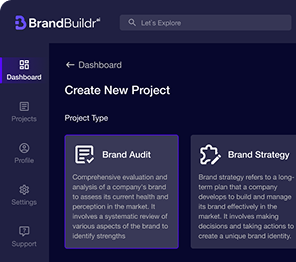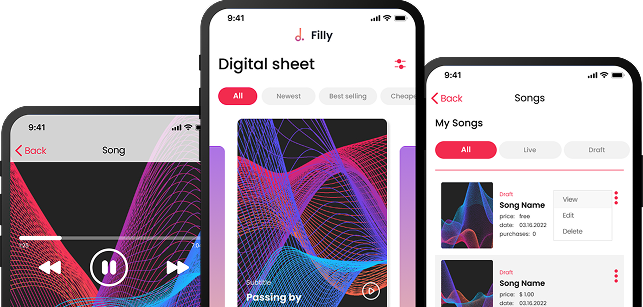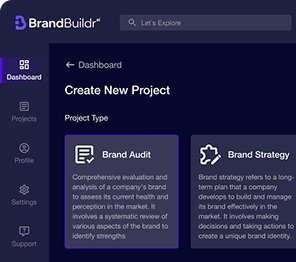Blockchain architecture defines the foundational structure of a distributed ledger system, determining how data is created, validated, stored, and shared across a decentralized network. As of 2025, organizations and developers demand blockchain development that not only ensures immutability, transparency, and trustlessness but also delivers high throughput, flexible governance, and strong privacy guarantees.
The digital assets market, which includes cryptocurrencies, NFTs, and DeFi, will generate about €91.3 billion in revenue worldwide in 2025.
Also, organizations will invest heavily in distributed‐ledger platforms, and global spending on blockchain solutions is projected to reach $19 billion by 2025.
This comprehensive guide explores the core components, layered models, architecture types, design best practices, real-world case studies, and cutting-edge trends shaping blockchain solutions today. Whether you're a developer building your first decentralized application or an enterprise architect evaluating distributed ledger technologies, this guide provides the technical depth and practical insights needed to design robust blockchain systems.

Core Components of Blockchain Architecture
Understanding blockchain architecture begins with its fundamental building blocks. The global blockchain technology market size was estimated at USD 31.28 billion in 2024 and is projected to reach USD 1,431.54 billion by 2030, growing at a CAGR of 90.1% from 2025 to 2030. Architects must prioritize scalable, future-proof designs Each component plays a critical role in maintaining the network's security, performance, and decentralization properties.
Nodes
.png)
Nodes are the backbone of any blockchain network, serving as the distributed computing infrastructure that maintains consensus and data integrity.
- Full Nodes store the entire ledger, validate transactions, and enforce consensus rules. They provide the highest security guarantees but require significant storage and bandwidth.
- Light Clients rely on full nodes for verification, reducing storage and bandwidth requirements. They're ideal for mobile applications and resource-constrained environments.
- Validators in Proof of Stake (PoS) or delegated systems propose and attest new blocks, earning rewards for honest behavior and facing penalties for malicious actions.
Blocks & Ledger
Blocks bundle transactions into cryptographically linked units, forming an immutable chain of records. Understanding block structure is crucial for blockchain developers and architects.
Each block contains:
- Header: includes previous block hash (linking blocks), Merkle root of transactions (ensuring integrity), timestamp (establishing chronological order), and nonce (proof-of-work solution).
- Merkle Tree: enables efficient and secure transaction integrity proofs without downloading entire blocks.
- Ledger: the append-only sequence of blocks ensures data immutability and provides a complete transaction history.
Transactions & Smart Contracts
Transactions represent state transitions recorded on the ledger, while smart contracts automate complex business logic.
- On-Chain Transactions carry digital asset transfers or contract calls, each cryptographically signed by the sender.
- Smart Contracts are self-executing code deployed on-chain to automate complex workflows and enforce rules without intermediaries.
Smart Contract Examples
Here's a simple storage contract in Solidity (Ethereum):
// SPDX-License-Identifier: MIT
pragma solidity ^0.8.0;
contract SimpleBlockchainStorage {
string public storedData;
address public owner;
event DataUpdated(string newData, address updatedBy);
constructor(string memory _initialData) {
storedData = _initialData;
owner = msg.sender;
}
modifier onlyOwner() {
require(msg.sender == owner, "Not authorized");
_;
}
function updateData(string memory _newData) public onlyOwner {
storedData = _newData;
emit DataUpdated(_newData, msg.sender);
}
function getData() public view returns (string memory) {
return storedData;
}
}
The same functionality in Move (Aptos/Sui):
module 0x1::SimpleStorage {
use std::string::{Self, String};
use std::signer;
use std::event;
struct Storage has key {
data: String,
owner: address,
}
struct DataUpdateEvent has drop, store {
new_data: String,
updated_by: address,
}
public fun initialize(account: &signer, initial_data: String) {
let storage = Storage {
data: initial_data,
owner: signer::address_of(account),
};
move_to(account, storage);
}
public fun update_data(account: &signer, new_data: String)
acquires Storage {
let addr = signer::address_of(account);
let storage = borrow_global_mut<Storage>(addr);
assert!(storage.owner == addr, 1);
storage.data = new_data;
event::emit(DataUpdateEvent {
new_data,
updated_by: addr,
});
}
}
Consensus Mechanisms
Consensus protocols ensure distributed agreement on the ledger state, representing one of the most critical architectural decisions:
- Proof of Work (PoW) secures via computational puzzles but consumes significant energy.
- Proof of Stake (PoS) relies on economic staking incentives with better energy efficiency.
- Proof of Authority (PoA) assigns block production to approved validators for faster finality.
- Directed Acyclic Graphs (DAGs) offer parallel validation for higher throughput.
- Hybrid Protocols (e.g., Proof of History) combine time-stamping with PoS for rapid finality.
Cryptography
Strong cryptographic primitives underpin security and privacy throughout the system:
.png)
- Public/Private Key Pairs authenticate transactions using elliptic curve cryptography.
- Hash Functions (SHA-256, Keccak-256) link blocks and secure data with one-way mathematical functions.
- Zero-Knowledge Proofs (ZK-SNARKs/STARKs) enable privacy-preserving transfers and validations without revealing sensitive data.

The Five-Layer Blockchain Model
A layered approach clarifies design and development decisions. Modern blockchain architectures follow a structured model that separates concerns and enables modular development.
1. Hardware Layer
Includes physical or virtual nodes, edge devices, and cloud infrastructure optimized for validator performance. This foundational layer determines network resilience and geographic distribution.
2. Data Layer
Manages on-chain and off-chain data storage. Incorporates decentralized storage solutions (e.g., IPFS, Arweave) and state channels for efficient data handling while maintaining cryptographic proofs.
3. Network Layer
Implements peer-to-peer (P2P) topologies and gossip protocols to propagate transactions and blocks. Modern enhancements include "supernodes" and mesh networks for low-latency communication.
4. Consensus Layer
Houses consensus algorithms and finality mechanisms. Modern designs separate execution and settlement, allowing pluggable consensus modules and execution engines for greater flexibility.
5. Application Layer
Exposes developer APIs, SDKs, and smart contract frameworks. Facilitates dApp creation, oracles for real-world data integration, and identity management systems.
Specialized Sublayers within these core layers address:
- Off-chain computation (Layer 2 rollups)
- Privacy engines (zero-knowledge rollups)
- Oracle networks for external data feeds
- Cross-chain bridge protocols
Types of Blockchain Architectures
Choosing the right architectural approach depends on specific use case requirements, regulatory constraints, and performance needs.
Public vs. Private vs. Consortium
.png)
- Public Blockchains (e.g., Ethereum, Solana) are open, permissionless networks emphasizing censorship resistance and maximum decentralization.
- Private Blockchains (e.g., Hyperledger Fabric) restrict participation, optimizing for enterprise confidentiality, compliance, and higher throughput.
- Consortium Blockchains blend both approaches, where a group of organizations jointly governs the network while maintaining some decentralization benefits.
Monolithic vs. Modular Architectures
- Monolithic designs bundle consensus, execution, and data availability in a single layer, simpler to implement but less flexible for optimization.
- Modular architectures decouple these concerns:
- Dedicated execution layers process transactions efficiently
- Separate consensus layers finalize blocks with different algorithms
- External data availability layers store block data with specialized optimizations
This modularity enables tailored performance tuning, easier upgrades, and enhanced cross-chain interoperability.

Cross-Chain & Interoperable Frameworks
Interoperability ecosystems enhance asset and data transfer across distinct blockchain networks:
- Polkadot uses substrate parachains and relay chains for shared security models
- Cosmos employs Inter-Blockchain Communication (IBC) for seamless token and message passing
- Layer-0 Protocols lay the foundation for multi-chain coordination and universal finality
Design Considerations & Best Practices
Successful blockchain architecture requires careful consideration of multiple factors that impact performance, security, and maintainability.
Scalability Patterns
Modern blockchain systems employ various scaling techniques:
- Sharding partitions state and transaction processing across multiple parallel shards, dramatically increasing throughput
- Rollups (Optimistic, ZK) batch transactions off-chain, posting aggregated proofs on-chain for security with improved efficiency
- Sidechains run parallel networks pegged to a main chain, offering customizable parameters for specific use cases
Security Patterns
Robust security requires multiple layers of protection:
- Formal Verification mathematically proves contract correctness before deployment
- Multisignature Wallets require multiple approvals for critical actions, reducing single points of failure
- Multi-Party Computation (MPC) enables secure key management and signing without exposing private keys
Data Privacy
Privacy-preserving techniques are increasingly important for enterprise adoption:
- Zero-Knowledge Proofs shield transaction details while ensuring validity and compliance
- Confidential Computing uses trusted execution environments (e.g., Intel SGX) for private computations with verifiable results
Upgradeability & Governance
Long-term sustainability requires thoughtful governance mechanisms:
- On-Chain Governance allocates token-weighted voting on proposals for democratic decision-making
- Timelocks delay protocol upgrades, providing community review windows and emergency response capabilities
- Proxy Patterns allow contract logic updates without changing addresses or losing state
Developer Tooling & Frameworks
The choice of development framework significantly impacts development speed and maintenance:
- Hyperledger Fabric offers modular consensus and fine-grained permissioning for enterprise use cases
- Substrate simplifies custom blockchain development with pre-built pallets and runtime modules
- Smart Contract Languages: Solidity (EVM), Move (Aptos/Sui), Rust (Solana) each balance safety, performance, and developer experience
Real-World Architectures & Case Studies
Understanding how blockchain architecture principles apply in practice helps guide design decisions for new projects.
DeFi Lending Protocol Architecture
A typical DeFi lending platform demonstrates complex architectural integration:
- Smart Contract Layer: Handles collateral management, interest rate calculations, and automated liquidations
- Oracle Integration: Chainlink or Band Protocol price feeds ensure accurate asset valuations
- Liquidation Engine: Automated auctions for undercollateralized positions maintain system solvency
- Front-End dApp: React/TypeScript interface connecting via Web3.js provides user experience
Key Architectural Decisions:
- Upgradeable proxy contracts for bug fixes and feature additions
- Circuit breakers for emergency pausing during market volatility
- Gas optimization patterns for cost-effective user interactions
Supply Chain Traceability Network
Enterprise supply chain solutions showcase permissioned network design:
- Permissioned Network of manufacturers, shippers, retailers, and regulatory bodies
- Event-Driven Architecture: IoT sensors publish shipment data to immutable ledger with timestamps and location data
- Access Control: Private data collections ensure only authorized parties view sensitive commercial information
- Integration Layer: APIs connecting to existing ERP and logistics management systems
Architectural Benefits:
- End-to-end transparency without compromising competitive data
- Automated compliance reporting and audit trails
- Real-time visibility into supply chain disruptions
Enterprise Finance Network
Corda-based networks demonstrate specialized enterprise blockchain architecture:
- Corda Ledger connecting banks, clearinghouses, and regulatory bodies
- Notary Clusters validate transaction uniqueness without revealing trade details to non-participants
- Integration APIs to legacy payment systems, SWIFT messaging, and regulatory reporting platforms
- Privacy by Design: Only transaction participants see transaction details while maintaining network integrity
Advanced 2025 Trends
The blockchain architecture landscape continues evolving with emerging technologies and changing requirements.
Modular Rollups & Data Availability
Separated execution and data layers reduce on-chain computational load while ensuring verifiable availability proofs. This architecture enables:
- Specialized execution environments optimized for specific use cases
- Shared security models across multiple rollup chains
- Independent scaling of different system components
Web3 & Decentralized Identity (DID)
Self-sovereign identity frameworks (e.g., W3C DID, KILT Protocol) integrate on-chain credentials for seamless KYC/AML compliance:
- User-controlled identity verification without centralized authorities
- Interoperable credentials across different blockchain networks
- Privacy-preserving selective disclosure of personal information
AI-Driven Consensus & Network Optimization
Machine learning models increasingly optimize blockchain network performance:
- Predictive models for validator behavior and network congestion
- Dynamic gas pricing algorithms based on real-time demand
- Automated anomaly detection for security threat identification
Regulatory & Compliance Layers
On-chain compliance modules enable real-time regulatory compliance without compromising decentralization:
- Programmable compliance rules embedded in smart contracts
- Real-time transaction monitoring and reporting
- Regulatory sandbox environments for testing new financial products
SEO-Optimized Supporting Sections
Glossary of Key Terms:
- Block: A batch of transactions cryptographically linked to the previous block, forming an immutable chain
- Hash: A fixed-size alphanumeric string uniquely representing input data, used for integrity verification
- Fork: A divergence in blockchain history due to protocol changes or network disagreements
- Gas: Transaction execution fee on EVM-compatible networks, preventing spam and compensating validators
- Validator: A node participating in consensus by proposing or attesting blocks, typically with economic incentives
- Merkle Tree: A binary tree structure that efficiently summarizes all transactions in a block
- Consensus: The mechanism by which distributed nodes agree on the canonical state of the ledger
- Smart Contract: Self-executing code deployed on-chain that automatically enforces predefined rules
Conclusion & Future Outlook
Blockchain architecture in 2025 is defined by modularity, interoperability, and privacy-preserving technologies. As networks evolve toward quantum-resistant cryptography, AI-assisted consensus mechanisms, and seamless cross-chain coordination, architects must craft flexible, secure, and compliant solutions that can adapt to changing requirements.
Ready to build your blockchain solution? Start by evaluating your specific requirements against the architectural patterns and frameworks discussed in this guide. Consider factors like transaction throughput, privacy requirements, regulatory constraints, and integration needs when selecting your technology stack. Need expert support to turn your vision into reality? Partner with Codebridge for end-to-end blockchain architecture design and development. Our experienced team delivers modular, interoperable, and privacy-preserving solutions tailored to your business goals. Learn more and get started today!
FAQ
What is the difference between PoS and PoA consensus mechanisms?
Proof of Stake assigns block production rights based on token holdings and economic incentives, while Proof of Authority relies on a vetted set of validators with established identities. PoS offers better decentralization, while PoA provides faster finality and energy efficiency.
How does sharding improve blockchain scalability?
Sharding splits the network state into parallel segments (shards), enabling simultaneous transaction processing across multiple shards. This horizontal scaling approach can increase throughput from hundreds to thousands of transactions per second.
Can smart contracts be upgraded after deployment?
Yes, through several architectural patterns: proxy contracts that delegate calls to upgradeable implementation contracts, governance-managed module swaps, or migration to new contract addresses. However, upgrades require careful design to maintain security and user trust.
What are the main security considerations in blockchain architecture?
Key security considerations include: consensus mechanism vulnerabilities, smart contract bugs, private key management, network-level attacks (51% attacks, eclipse attacks), and governance token concentration. Multi-layered security approaches combining cryptographic, economic, and social incentives provide the strongest protection.
How do Layer 2 solutions integrate with main blockchain architecture?
Layer 2 solutions operate as separate execution environments that periodically settle on the main chain. They inherit security from the base layer while providing higher throughput and lower costs through techniques like optimistic rollups, ZK rollups, or state channels.
Heading 1
Heading 2
Heading 3
Heading 4
Heading 5
Heading 6
Lorem ipsum dolor sit amet, consectetur adipiscing elit, sed do eiusmod tempor incididunt ut labore et dolore magna aliqua. Ut enim ad minim veniam, quis nostrud exercitation ullamco laboris nisi ut aliquip ex ea commodo consequat. Duis aute irure dolor in reprehenderit in voluptate velit esse cillum dolore eu fugiat nulla pariatur.
Block quote
Ordered list
- Item 1
- Item 2
- Item 3
Unordered list
- Item A
- Item B
- Item C
Bold text
Emphasis
Superscript
Subscript





















.avif)



.avif)

.avif)


